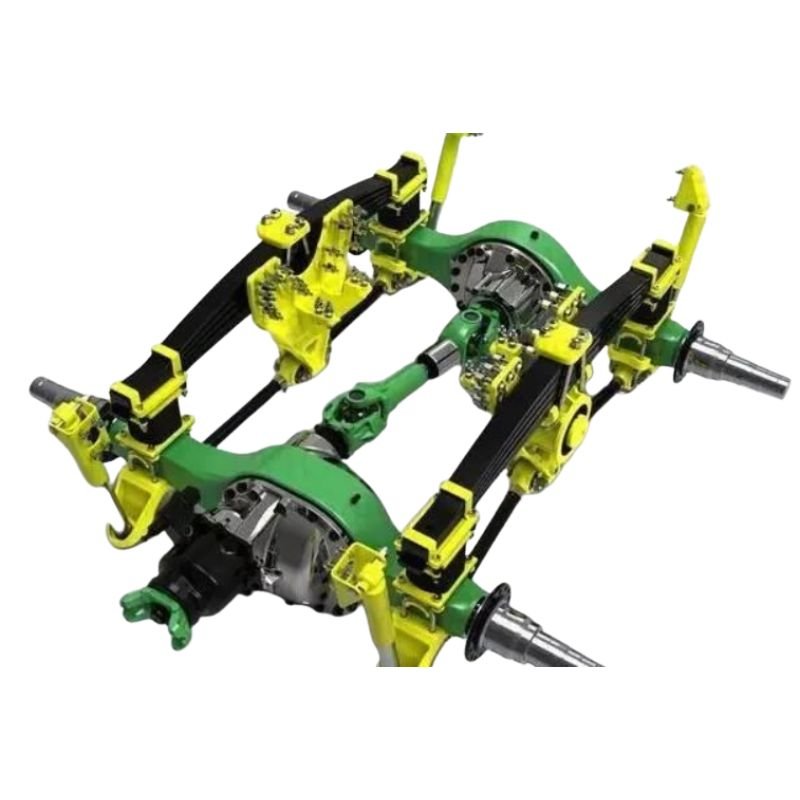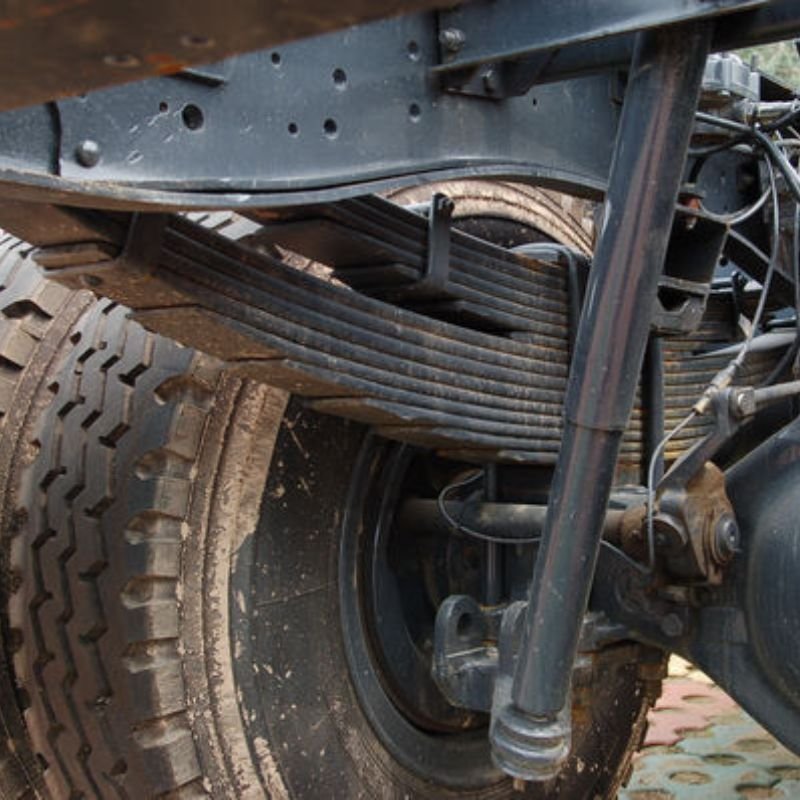Critical Data: Heavy Truck Association 2024 report shows that 80% of premature leaf spring failures stem from improper maintenance, reducing average lifespan by 40%.
When your truck makes a “creaking” noise during heavy-load transportation or the suspension feels stiff, these are often distress signals from the leaf springs. As the core component of a trailer’s suspension system, proper leaf spring maintenance directly impacts driving safety and operational costs. This guide provides expert maintenance techniques from 15 years of repair experience.
I. Routine Cleaning: Preventing the Silent Killer
Mud and debris accumulation between leaf springs is the primary cause of accelerated wear:
- High-pressure washing: Weekly cleaning with ≥8MPa water jet, focusing on overlapping areas (use extended nozzle)
- Special condition handling: After transporting mineral powder or cement, use alkaline cleaner (pH9-10) to neutralize acidic corrosion
- Drying technique: Short low-speed drive after washing to air-dry and prevent water accumulation
⚠️ Warning: Never use steel brushes directly on spring surfaces – this damages anti-rust coatings!
II. Lubrication: The Step 90% of Drivers Get Wrong
1. Lubricant Selection
According to GB/T 19844 standard:
| Lubricant Type | Operating Temperature | Replacement Cycle |
|---|---|---|
| Graphite Grease | -30℃~120℃ | 3 months/20,000 km |
| Molybdenum Disulfide Grease | -40℃~160℃ | 6 months/50,000 km |
2. Correct Lubrication Points
Focus on these critical areas (see illustration):
- Contact surfaces between leaves
- Shackle pin and bushing junction
- Center bolt threads

III. Professional Inspection Methods
Veteran driver Master Wang’s “3-Minute Quick Check”:
- Visual inspection: Use flashlight to identify transverse cracks (especially on 2nd-3rd leaves)
- Tap test: Lightly tap with copper rod – clear ring indicates good condition, dull sound suggests potential fracture
- Gap measurement: Check inter-leaf clearance with feeler gauge – adjust if exceeding 1.5mm
IV. Load Management Golden Rules
Overloading causes exponential damage to leaf springs:
- 10% overload → 30% lifespan reduction
- 20% overload → 55% lifespan reduction
- 30% overload → 8x higher risk of sudden failure
V. Rainy Season Special Protection
Additional measures for humid conditions:
- Reapply waterproof grease within 24 hours after rain
- Check spring clip tightness (moisture accelerates rubber aging)
- Apply anti-rust wax during long-term parking
VI. Troubleshooting Common Issues
Q1: Creaking noise while driving?
Troubleshooting steps:
- Check for dry bushings (source of 80% noises)
- Verify spring clip bolt torque (use torque wrench)
- Inspect U-bolt tightness (refer to manual for specifications)
Q2: Can old and new spring leaves be mixed?
Absolutely not! Mixing springs with different fatigue states causes:
- Uneven stress distribution
- Accelerated new spring wear
- Potential sudden breakage
VII. Recommended Maintenance Schedule
| Maintenance Item | Urban Roads | Mountain Roads | Mines/Harsh Environments |
|---|---|---|---|
| Comprehensive Inspection | 3 months | 2 months | 1 month |
| Lubrication Service | 20,000 km | 15,000 km | 8,000 km |
| Bushing Replacement | 2 years | 1 year | 6 months |
Pro Tip: Inspect leaf springs during brake pad replacements to save 30% maintenance time.
Your Experience Matters!
Do you have unique leaf spring maintenance techniques? Share your practical insights in the comments!


